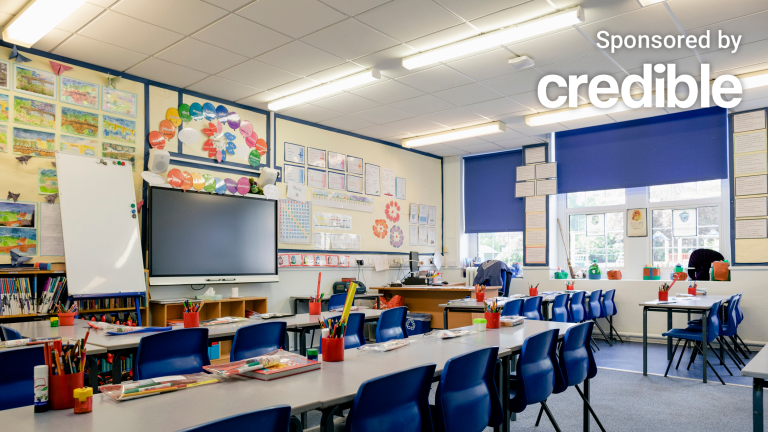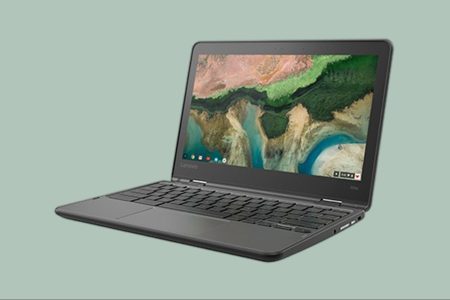As American families continue dealing with high inflation and recession fears, they could be spending more than ever on back-to-school supplies for their children, according to reports.
Back-to-school spending is expected to reach a record $41.5 billion, up from $36.9 billion in 2022 and the previous high of $37.1 billion in 2021, according to an annual survey by the National Retail Federation and Prosper Insights & Analytics.
Specifically, families with children in elementary through high school said they expect to spend an average of $890.07 on back-to-school supplies this year – a record high, the NRF said.
This boost in projected expenses is mainly fueled by the high demand for electronics. Total spending on electronics is expected to hit a record $15.2 billion, according to the survey.
In fact, more than half (69%) of shoppers said they expect to spend money on electronics or other computer-related accessories – the highest in the survey’s record.
Here are the top electronics that back-to-school shoppers plan to purchase.
- Laptops (51%)
- Tablets (36%)
- Calculators (29%)
“Back-to-class shopping is one of the most important consumer shopping occasions of the year,” NRF President and CEO Matthew Shay said. “Our research for 2023 shows American consumers are eager to jumpstart their back-to-school and college purchases early. Retailers have been preparing for months to ensure they are well stocked with essential items that families and students need for the school year.”
If high-interest debt is taking a toll on your budget, you could consider paying it off with a personal loan at a low interest rate to lower your monthly payments and save. Visit Credible to compare options from different lenders without affecting your credit score.
CREDIT CARD DEBT SURPASSES $1 TRILLION FOR AMERICANS: NY FED
Back-to-college shopping set to break records
Despite the rising costs of attending college, many students and their families could be spending significant amounts on back-to-college supplies.
Back-to-college spending is expected to reach $94 billion or $20 billion more than last year’s record, the NRF said.
College students and their families are expected to spend an average of $1,366.95 per person, up from $1,199.43 last year, and marking a record from the previous high of $1,200.32 in 2021. Back-to-college spending has nearly doubled since 2019, according to the NRF.
And the bulk of that spending could range from big-ticket items like electronics and furnishings to necessities like food, the NRF said.
But whether it’s about shopping for a fifth grader or a college senior, back-to-school shoppers have their eyes out for the best deals.
“Even though consumers plan to spend more on school and college-related items this year, they are still looking to find the best value and deals,” Phil Rist, Prosper’s executive vice president of strategy, said in a statement. “Consumers are stretching their dollars by comparing prices, considering off-brand or store-brand items, and are more likely to shop at discount stores than last year.”
In fact, the top shopping destinations for back-to-school shoppers are online, department stores and discount stores, according to the survey.
If you’re struggling with high-interest debt, you could consider paying it off with a personal loan at a lower rate. Visit Credible to speak with an expert and get your questions answered.
MORE THAN HALF OF GEN XERS STOPPED SAVING FOR RETIREMENT, HERE’S WHY: SURVEY
Inflation remains top of mind for many Americans
The reason many American families expect to spend more on back-to-school shopping this year is that inflation remains a top concern, according to a study by KPMG.
In fact, 82% of those who plan to spend more per student on back-to-school shopping in 2023 than in 2022 said it’s due to their expectation of rising prices, KPMG said.
And nearly 50% of shoppers who expect to spend less said they have a smaller monthly budget to spend on school supplies.
Inflation in July increased 3.2% year-over-year, according to the latest consumer price index (CPI) data. And while that’s far from its June 2022 peak of 9.1%, it could open the door for more interest rate hikes by the Federal Reserve – which could put even more strain on consumers’ finances.
In July, the Fed raised interest rates by 25 basis points, marking the 11th spike since 2022. The move brought the federal funds target range to 5.25% to 5.5% or its highest level in 22 years.
And prior to the release of the July CPI data, one Fed official said that interest rate hikes weren’t off the table.
“Additional rate increases will likely be needed to get inflation on a path down to the FOMC’s 2% target,” Fed Governor Michelle W. Bowman said in a statement.
If you’re concerned about high-interest debt, you could consider using a personal loan at a lower interest rate to pay it down. Visit Credible to get your personalized rate in minutes.
SOME AMERICANS DROWNING IN CREDIT CARD DEBT FOLLOWING THE COVID-19 PANDEMIC: SURVEY
Have a finance-related question, but don’t know who to ask? Email The Credible Money Expert at [email protected] and your question might be answered by Credible in our Money Expert column.
Read the full article here









